Looking for a delicious and nutritious meal that’s packed with flavors and textures? Bibimbap, a traditional Korean rice bowl, might just be what you need.
Bibimbap is a vibrant dish of steamed white rice mixed with fresh, marinated, and sautéed vegetables, often topped with a sunny-side-up egg and strips of seasoned seaweed.
What makes this dish stand out is its versatility, as you can enjoy it with various vegetables, such as spinach, mushrooms, and carrots, and add protein like beef or tofu. For those seeking extra flavor, the dish can be drizzled with sesame oil and paired with a spicy-sweet gochujang sauce.
For a more traditional touch, you might want to try dolsot bibimbap, where the rice is served in a hot stone bowl, making the bottom layer crispy and satisfying.
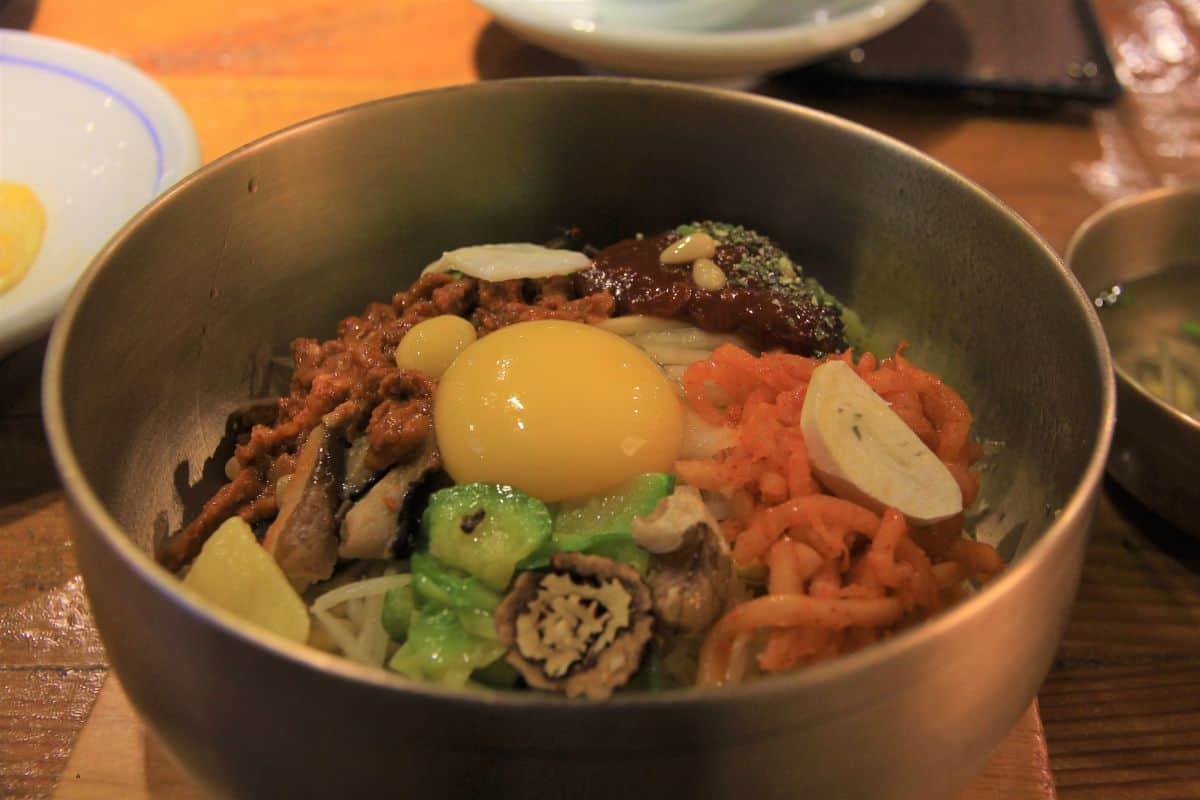
Jump to:
🧐 Historical Context
Origin of Bibimbap
Bibimbap, which translates to "mixed rice," has been around for about a century and evolved from a dish called Goldongban, which emerged during the Joseon Period (14th-16th centuries). Goldongban featured a similar concept: a bowl of rice topped with vegetables, meat, and sauce.
In those times, Goldongban had a ritualistic component and was often part of communal meals where families would gather leftover foods and mix them with rice, symbolizing unity and sharing. This practice eventually gave rise to bibimbap, which is what is known today.
While the exact origins are still debated, what's clear is that bibimbap has always embodied the essence of Korean cuisine—simple yet flavorful, with an emphasis on fresh ingredients.
Cultural Significance
Bibimbap isn't just a popular Korean rice bowl; it holds a special place in Korean culture. In Korea, it's more than a meal—it's a symbol of balance and harmony, perfectly balancing various tastes and textures, from the crunch of vegetables to the richness of sesame oil and the heat of gochujang chili paste.
People often enjoy bibimbap during ceremonies and festive occasions, such as the Korean New Year or Chuseok, the Korean harvest festival. Each ingredient is carefully selected not just for flavor but for its symbolic meaning, like long-lasting health and prosperity.
Bibimbap has also gained international fame and is now featured in many restaurants worldwide, showcasing the unique qualities of Korean cuisine to a global audience. This iconic dish represents not just Korean food but the culture and history behind it.
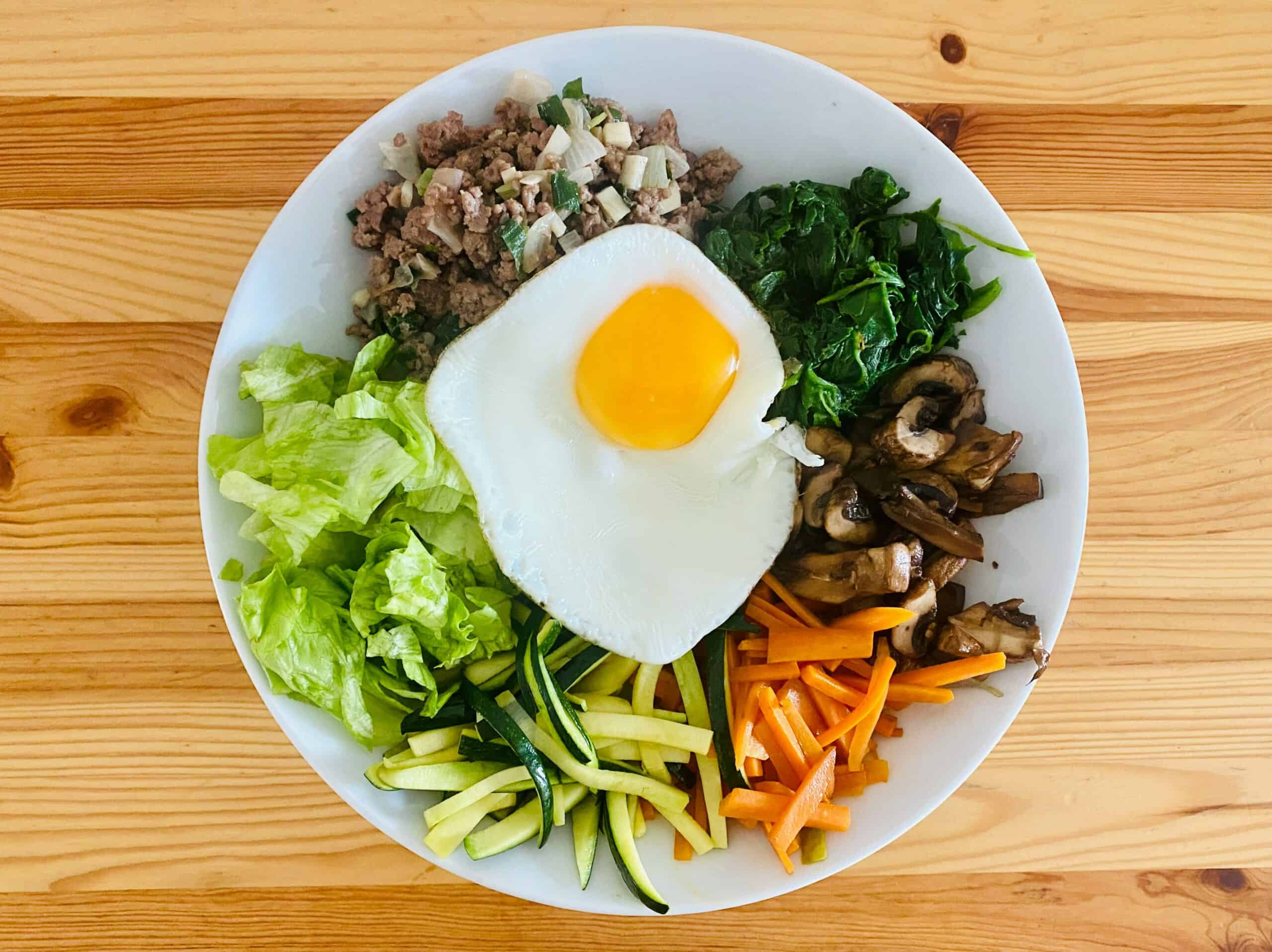
🥒 Key Ingredients
Rice Varieties
The foundation of bibimbap is rice. Most recipes use steamed white rice for its neutral taste and ability to soak up flavors, while some might use brown rice or even a mix of different grains for a nuttier flavor.
Another popular option is dolsot bibimbap, where the rice is cooked in a hot stone bowl; this method creates a crispy layer at the bottom, adding a delightful crunch. Regardless of the type, the rice serves as a versatile base that complements the dish’s diverse toppings.
Vegetable Selections
Bibimbap features assorted vegetables, each contributing different textures and flavors. Common choices include spinach, carrots, zucchini, and bean sprouts, which are often blanched or quickly sautéed with garlic and sesame oil. Mushrooms, particularly shiitake mushrooms, add an earthy taste.
Korean radish and cucumber provide a refreshing crunch, while gosari (fernbrake) and doraji (bellflower roots) add traditional flavors. Vegetables are typically seasoned individually to highlight their natural tastes.
Protein Choices
Various proteins enhance the nutrients and flavors of bibimbap. Beef, often prepared as bulgogi or ground beef, is a classic choice. Rib eye or beef tenderloin can also be used for a tender and juicy option.
For those preferring poultry, chicken is a great alternative, while tofu offers a vegetarian option. Eggs, usually fried sunny-side up, are a staple, adding richness when the yolk is mixed in. Seafood lovers might add shrimp or fish for a different take.
Proteins are typically marinated with soy sauce, sesame oil, and garlic to ensure they’re flavorful and complement the vegetables and rice perfectly.
🥫 Key Flavorings and Seasonings
Gochujang and Bibimbap Sauces
Gochujang, a fermented Korean chili paste, is crucial to bibimbap; it provides the dish's signature heat and depth. The paste is made from chili powder, glutinous rice, fermented soybeans, and salt. This combination makes it both spicy and slightly sweet.
Bibimbap sauce often incorporates gochujang. This sauce can vary, but typically includes gochujang, sesame oil, rice vinegar, and honey. Some versions might add garlic for an extra punch. This sauce coats the rice and vegetables, binding the flavors together in every bite.
Soy Sauce and Other Seasonings
Soy sauce brings umami and saltiness to bibimbap, and it's commonly used to marinate the beef and season the vegetables. The soy sauce mix might include mirin and a bit of rice vinegar for balance.
Other seasonings like garlic and kosher salt play a supporting role. Garlic adds a robust, savory note, while kosher salt enhances the natural flavors.
Occasionally, a touch of honey is mixed in to balance the salty and spicy elements. These ingredients work together to make each bite of bibimbap a harmonious blend of flavors and textures.
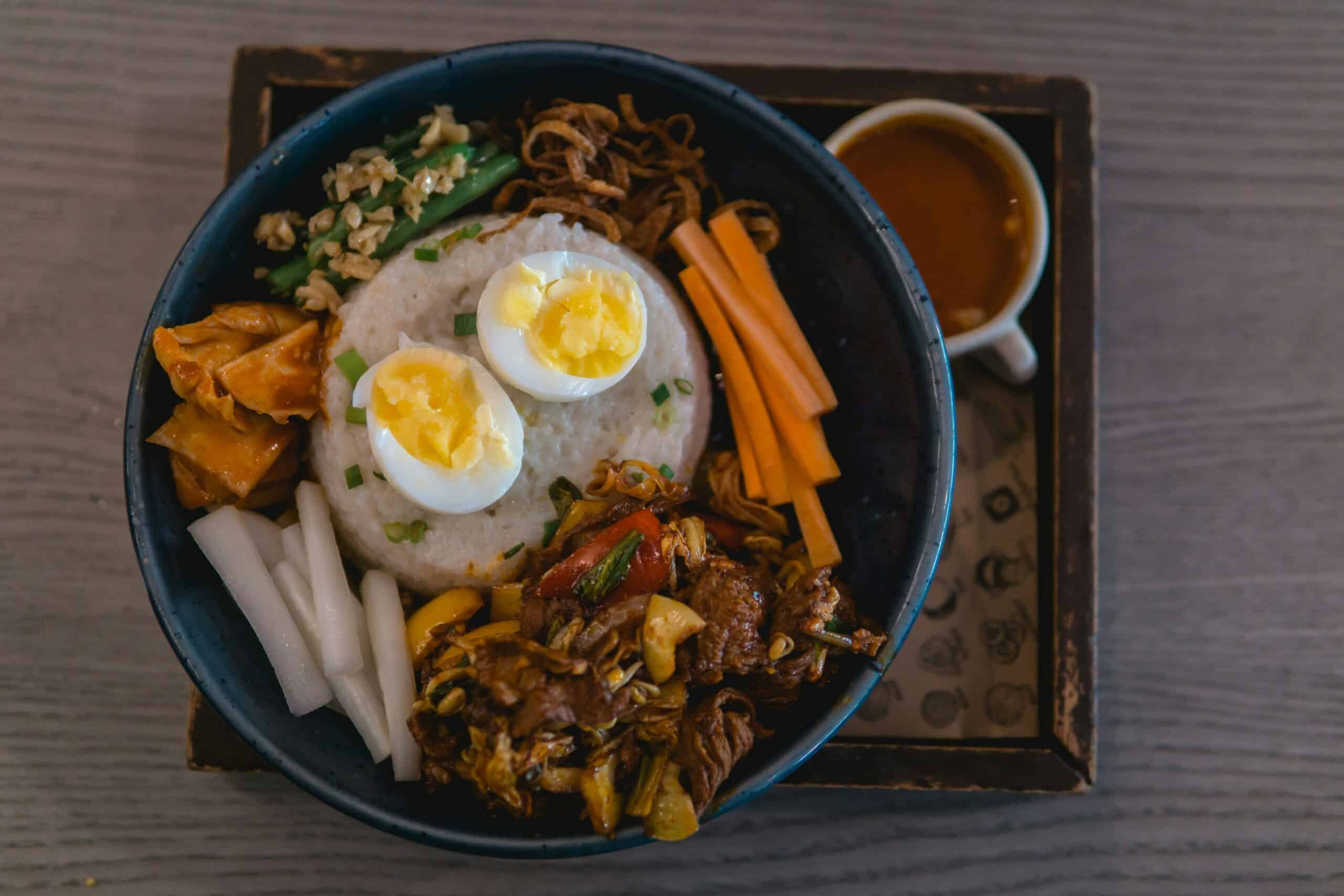
🔪 Preparation Techniques
Cooking Rice Perfectly
The foundation of bibimbap is perfectly cooked rice. For the best results, use short-grain white rice. Rinse the rice under cold water until the water runs clear. This removes extra starch and prevents clumping.
Once rinsed, add the rice to a rice cooker with the appropriate amount of water. Typically, the ratio is 1:1.2 (1 cup of rice to 1.2 cups of water). This ensures the rice is slightly sticky, which is ideal for bibimbap.
If you don't have a rice cooker, a pot on the stove works, too. Just bring the rice and water to a boil, then reduce the heat, cover, and simmer for about 18 minutes.
Pro Tip: Let the rice sit for an additional 10 minutes after cooking to absorb any remaining steam.
Preparing Vegetables and Protein
A variety of colorful vegetables and protein options make bibimbap visually appealing and nutritious. Common vegetables include spinach, mushrooms, carrots, zucchini, bean sprouts, and radish. Each vegetable is typically cooked separately.
For example, sauté spinach lightly with a little sesame oil and garlic. For carrots and zucchini, julienne them and stir-fry briefly to maintain their crunch. Mushrooms should be sliced and sautéed until tender.
The protein can range from beef to chicken, tofu, or even a fried egg. Marinate the protein in soy sauce, garlic, and a bit of sugar. When ready to cook, use a cast-iron pan or any sturdy pan, heat some neutral cooking oil, and cook the protein until done.
Pro Tip: Remove protein from the fridge 30 minutes before cooking to bring it to room temperature, ensuring even cooking.
Accompaniment and Side Dishes
Bibimbap is often accompanied by banchan, or Korean side dishes. Kimchi, pickled radishes, and seasoned seaweed are typical options. These sides add flavor and variety to the meal Additionally, serving bibimbap with a hot bowl of soybean paste soup completes the experience.
For leftovers, mix them into the remaining rice to make a quick and flavorful fried rice dish the next day. The mix of fresh and fermented sides enhances the overall experience, making every bite exciting and full of flavors.
This presentation, whether traditional or modern, elevates the joy of eating bibimbap, making it more than just a meal but a delightful experience.
Assembling and Mixing
Assembly is where the magic happens. Start by placing a serving of hot cooked rice in a big bowl. Arrange a small amount of each prepared vegetable in separate piles over the rice, creating a colorful presentation. Add the cooked protein on top.
To finish, drizzle some sesame oil and a spoonful of gochujang (Korean chili paste) over the top. For extra flavor, you can also add a sprinkle of sesame seeds. If desired, top with a fried egg with a runny yolk.
Before eating, mix everything together thoroughly. This ensures all ingredients are well combined, creating a harmony of flavors and textures in each bite.
🍲 Traditional Dolsot Bibimbap
Dolsot bibimbap is served in a hot stone bowl or dolsot to keep the dish warm and create a lovely, crispy rice layer at the bottom. To prepare, lightly oil a stone bowl with sesame oil and heat it over medium heat.
Into the hot bowl, place a serving of steamed rice and arrange seasoned vegetables like cucumbers, carrots, spinach, and mushrooms in neat sections on top.
Add marinated beef or tofu and a fried egg to the center. Drizzle with more sesame oil and serve immediately. The stone bowl will sizzle and cook the rice, making it extra delicious.
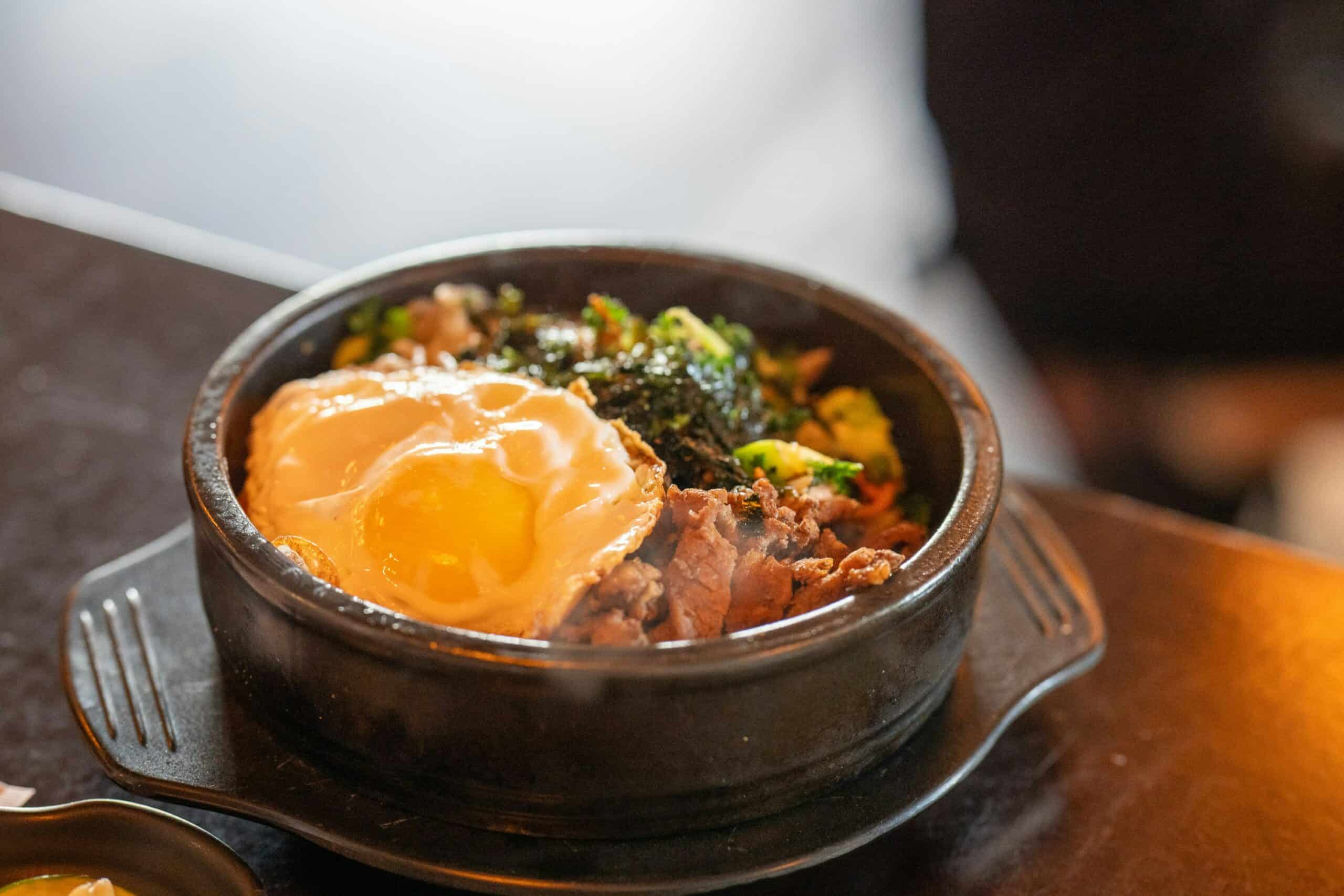
🥕 Dietary Variations
Vegetarian and Vegan Options
Vegetarians and vegans can enjoy bibimbap by simply using plant-based ingredients. Instead of bulgogi, tofu or tempeh can be used for protein. The tofu can be marinated in soy sauce, garlic, and a little bit of sesame oil before being pan-fried.
Assorted vegetables like kale, zucchini, carrots, spinach, and asparagus are perfect for adding color and nutrients.
For a vegan version, avoid using eggs. For a richer taste, add extra vegetables or mushrooms. Some recipes suggest using a variety of sauces, like sriracha or a vegan gochujang sauce, to maintain the spice profile.
Include fermented veggies like kimchi for an extra burst of flavor and beneficial probiotics. The combination of these ingredients ensures that the dish remains high in vitamins, minerals, and fiber, making it both healthy and satisfying.
Gluten-Free and Low-Carb Adaptations
For those needing gluten-free options, bibimbap can easily be adapted by replacing traditional soy sauce with tamari or coconut aminos. Check the labels carefully to ensure that any pre-made sauces or marinades used are gluten-free.
Low-carb versions can substitute the usual white rice with cauliflower or shirataki rice. These alternatives keep the dishes light while still providing a similar texture.
Incorporating a wide variety of fresh vegetables such as broccoli, bell peppers, and cucumbers also helps reduce the carbohydrate content without losing essential nutrients.
To maintain a high protein intake, use grilled chicken, shrimp, or even extra firm tofu marinated in gluten-free soy sauce to ensure a rich, authentic flavor while keeping the dish suitable for gluten-sensitive individuals.
❓ Frequently Asked Questions
A traditional bibimbap sauce includes gochujang (Korean red chili paste), sesame oil, sugar, and vinegar. For extra flavor, you can also add garlic and toasted sesame seeds. Mix these ingredients until you get a uniform, spicy sauce that's perfect for topping your bibimbap.
What ingredients are essential for an authentic bibimbap?
Authentic bibimbap typically contains steamed white rice, assorted seasoned vegetables like spinach, carrots, and bean sprouts, marinated meat such as beef, and a fried egg. The dish is completed with gochujang sauce.
For beginners, a simple bibimbap recipe involves using pre-cooked rice, easily available vegetables like carrots and cucumber, and store-bought gochujang sauce. You can top it with a fried egg.
Bibimbap is packed with nutrients. The vegetables offer vitamins and fiber, while the rice provides essential carbohydrates. You'll get a good protein source if you use lean meats. The dish is balanced and nutritious, making it a healthy meal option.
Bibimbap is typically served in a heated stone bowl, but you can use a normal bowl at home. Arrange the rice at the bottom and neatly place the other ingredients on top. Before eating, mix everything well to evenly distribute the flavors.
The flavor of bibimbap can vary widely depending on the ingredients. Using different vegetables or proteins can change the taste, while the amount of gochujang sauce affects its spiciness.

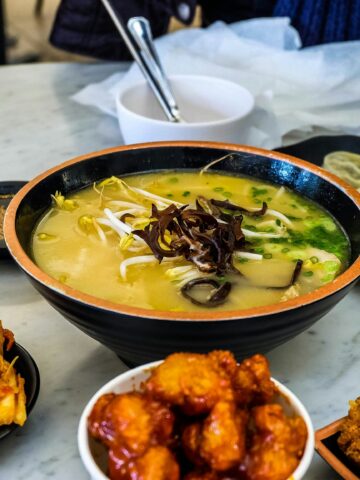
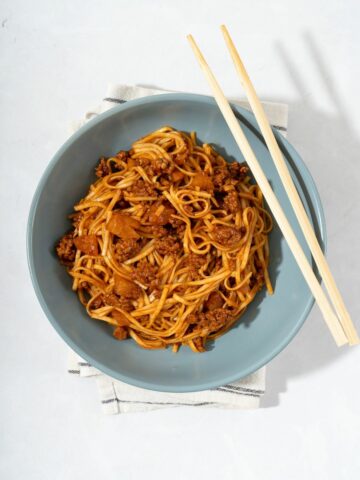
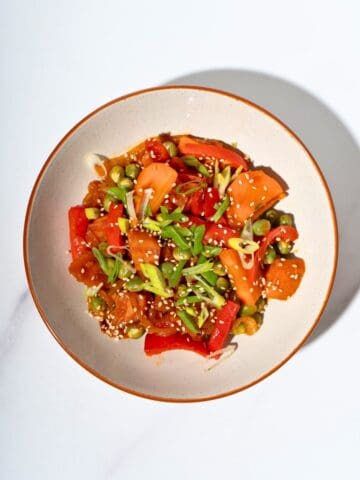

Comments
No Comments